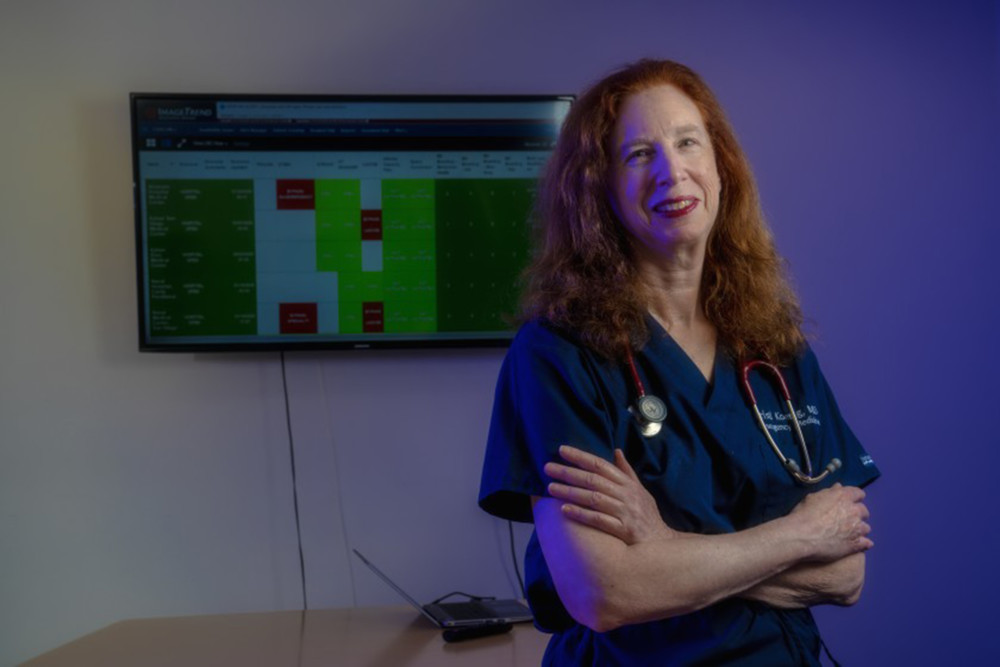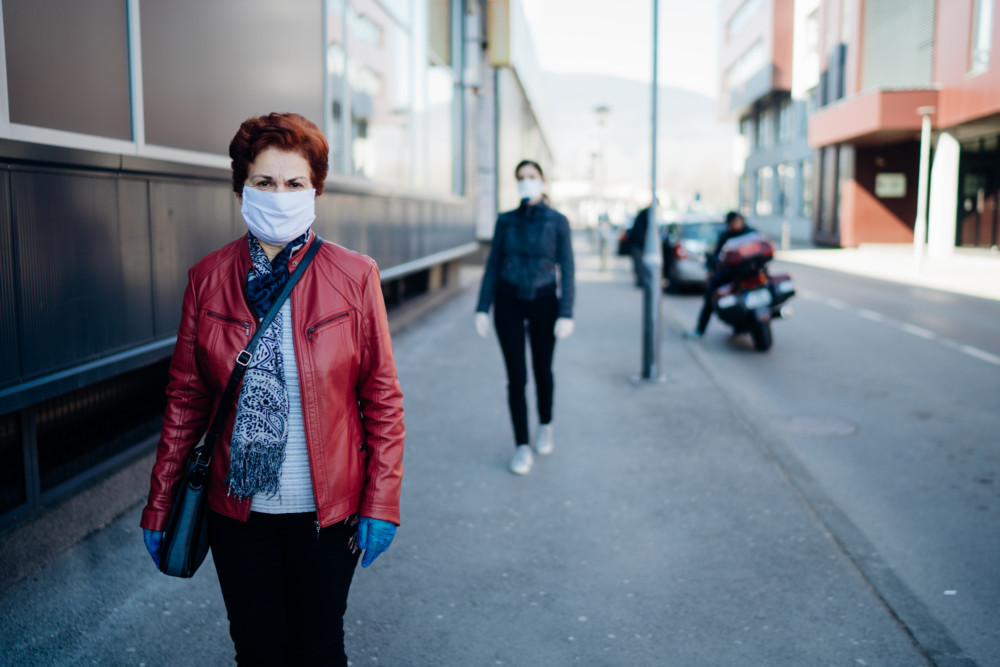By Paul Sisson
The San Diego Union-Tribune
WWR Article Summary (tl;dr) Back in 2014 when Ebola hit, Dr. Kristi Koenig realized there needed to be a better way to protect providers and patients. So she came up with a clear and easy-to-remember process if/when potentially deadly infections arrive in emergency departments.
SAN DIEGO
Identify. Isolate. Inform.
Those three little words aren’t much on their own. They’re not even a complete sentence. But they encapsulate an idea born in the mind of Dr. Kristi Koenig, medical director of the San Diego County Emergency Medical System, that has revolutionized the way that medical professionals tackle treating patients with infectious diseases.
Though the big Ebola scare of 2014 created the impetus to find a better way, Koenig’s idea has been adapted to a host of other pathogens, most recently novel coronavirus, which has now killed more than 2,300 in China and infected more than 79,000 worldwide.
Back in 2014, it became clear to Koenig, who was then on the medical staff at UC Irvine, and colleagues on an American College of Emergency Physicians panel convened to study the Ebola situation, that there needed to be a better way to protect providers and patients when deadly infections arrive in emergency departments.
The need was made painfully obvious when Thomas Eric Duncan, a Liberian visiting family from Texas, was worked up for abdominal pain at a Dallas hospital and sent home. It turned out it was Ebola that was causing his symptoms, and two of the nurses who treated him were infected.
“We really needed to find a way to make sure that we were properly assessing risk,” Koenig said. “We couldn’t just start isolating everybody, because that would quickly consume all of our available resources.”
It turned out that the traditional triage process used by hospitals everywhere was a big part of the problem.
The standard practice was driven by the need to determine, as quickly as possible, which patients needed attention most urgently, and so nurses and paramedics usually collected vital signs such as blood pressure, temperature, respiratory rate and pulse first.
But collecting those vital signs generally required touching the patient, which is exactly the wrong set of first steps for anyone with a deadly and contagious infection.
It seemed, Koenig said, that some assessment of public health risk needed to come before that traditional vital sign check. In a moment of clarity, she said, she realized that what was needed was a question that prompted emergency personnel to ask first about foreign travel or other ways that a patient could have been exposed to an infectious disease.
Anyone who said yes could be immediately isolated and health care personnel could take the time necessary to don protective equipment, masks, gloves, gowns and goggles, before collecting vital signs.
But how to get busy health care workers to change the way they work?
After all, studies have shown that it can take decades for superior new medical methods to become the new standard of care.
In a flash of inspiration, Koenig, a stickler for precision language, hit on those three simple words that could crystallize this new way of thinking:
Identify the possible presence of infectious disease by first asking about the situations that might be causing the symptoms that brought them in. If they’re coughing and have a fever, and there is a global coronavirus epidemic underway, ask first if they’ve recently been in China.
Isolate anyone whose answers indicate that they might have been exposed to a communicable disease.
Inform your local public health department of what you’ve found immediately. The sooner they get reports, the sooner they can spot patterns and take broad community-wide action.
It wasn’t that nobody was asking infectious disease-based questions during the triage process, said Dr. James Augustine, a board member of the American College of Emergency Physicians. If certain diseases, say tuberculosis, were known to be going around in a particular area that a particular set of hospitals served, then exposure-based questions might be asked up front.
But no one had ever come up with such a clear and easy-to-remember process that pretty much asked health providers to keep up with what’s going around and make sure that questions about travel history and other routes of possible exposure are routinely asked before close contact happens.
buy amitriptyline generic https://buynoprescriptionrxonline.net/amitriptyline.html over the counter
“Kristi kind of made it all come together with this three-I approach,” Augustine said. “A lot of other bodies, pretty much everywhere, have picked it up because of its simplicity and reliability. It allows you, in a very smart way, to determine which patients need isolation and which ones don’t.”
The U.S. Centers for Disease Control and Prevention got on board when Koenig mentioned her method during a conference call in the midst of the Ebola scare.
In a recent interview, Dr. Eric McDonald, San Diego County’s epidemiology and immunization medical director, said he was confident in the ability of local hospitals to pick up possible coronavirus cases because local facilities and first responders are following the three-I protocol that Koenig came up with.
At present, COVID-19 has not achieved anything remotely similar to the widespread person-to-person transmission that has caused so much panic in China and Southeast Asia.
But that doesn’t mean there is no risk in America. Thousands of Americans have been quarantined already as travelers return home from China and learn that their movements will be curtailed for 14 days.
Each returning traveler is instructed to stay home for 14 days and to call their local health department if they start experiencing symptoms such as fever, cough and shortness of breath. Nobody is supposed to just head on over to their local emergency department for a workup, because, if they do turn out to be infected, visiting the hospital could end up introducing the virus to a new group of vulnerable people.
So far, it appears from anecdotal reports that the home quarantine population in San Diego County, and nationwide, is taking these instructions to heart.
But, as the sheer number of people under home quarantine grows, so too do the odds of someone slipping through the cracks and, one way or another, walking through the doors of a local emergency room or suffering an unrelated medical emergency that brings paramedics into the picture.
___
Distributed by Tribune Content Agency, LLC.















































































































































































































































































































































































